
THUNDEROUS SILENCE

199 Elm Street
Somerville, MA 02144 USA
www.wisdompubs.org
2013 Dosung Moojin Yoo
All rights reserved.
No part of this book may be reproduced in any form or by any means, electronic or mechanical, including photography, recording, or by any information storage and retrieval system or technologies now known or later developed, without permission in writing from the publisher.
Library of Congress Cataloging-in-Publication Data
Yoo, Dosung.
Thunderous silence : a formula for ending suffering : a practical guide to the Heart sutra / Dosung Yoo.
pages cm
Includes bibliographical references and index.
ISBN 1-61429-053-9 (pbk. : alk. paper)
1. Tripitaka. Sutrapitaka. Prajaparamita. HrdayaCriticism, interpretation, etc. 2. Religious lifeBuddhism. 3. BuddhismDoctrines. I. Title.
BQ1967.Y65 2013
294.385dc23
2012022585
ISBN 9781614290537
eBook ISBN 9781614290643
17 16 15 14 13
5 4 3 2 1
Interior design by Gopa&Ted2; typset by LC. Set in Diacritical Garamond 12/15.54.
Illustration on page 122 is by Rocky Bracero.
Wisdom Publications books are printed on acid-free paper and meet the guidelines for permanence and durability of the Production Guidelines for Book Longevity of the Council on Library Resources.
Printed in the United States of America.
 This book was produced with environmental mindfulness. We have elected to print this title on 30% PCW recycled paper. As a result, we have saved the following resources: 14 trees, 6 million BTUs of energy, 1,152 lbs. of greenhouse gases, 6,248 gallons of water, and 418 lbs. of solid waste. For more information, please visit our website, www.wisdompubs.org. This paper is also FSC certified. For more information, please visit www.fscus.org.
This book was produced with environmental mindfulness. We have elected to print this title on 30% PCW recycled paper. As a result, we have saved the following resources: 14 trees, 6 million BTUs of energy, 1,152 lbs. of greenhouse gases, 6,248 gallons of water, and 418 lbs. of solid waste. For more information, please visit our website, www.wisdompubs.org. This paper is also FSC certified. For more information, please visit www.fscus.org.
This book is dedicated to the teachers who have helped me find and walk on the Dharma path.
CONTENTS
For him to whom emptiness is clear,
Everything becomes clear.
For him to whom emptiness is not clear,
Nothing becomes clear.
Nagarjuna
H UI KO, a prominent Confucian scholar and practitioner, came to Bodhidharma, the First Patriarch of Zen Buddhism, to become his disciple. Despite all his knowledge, Hui Ko could not attain a peaceful and centered state of mind. When Hui Ko saw Bodhidharma, who was practicing meditation in a cave, he said, Master! My mind is not at peace. Please put my mind to rest. Bodhidharma replied, Show me your disturbed mind. Hui Ko paused and searched for his mind. After a while he said, Master, I have searched for my mind, but I cannot find it. Bodhidharma replied, Then I have already put your mind to rest.
Bodhidharma did not ask Hui Ko why he suffered. He did not ask about Hui Kos financial problems, nor did he ask about his personal relationships; rather, Bodhidharma asked him who or what was suffering. What Bodhidharma questioned was the real nature of Hui Kos mind, his true self.
When a stone hits a dog, the dog chases after the stone. When a stone hits a lion, the lion chases after the person who threw the stone. When we understand the reality of ourselves (the reality of our minds), suffering ceases. That is the core teaching of Buddhadharma. That is the essence of the Heart Sutra.
Several years ago, a Korean journalist conducted a survey to find out what Koreans wanted the most in their lives, and he asked them to express this desire in one word. Most Koreans chose haeng-bok, which means happiness. Whatever our race, ethnicity, or age may be, what we want most in our lives is happiness. That is why we try to have a better job, a better house or car, or more recognition. We constantly try to alter our conditions rather than make the effort to discover our true selves.
Socrates said, Know thyself. Trying to change our environment to create happiness without knowing the reality of our mind is like building a house on quicksand and expecting to live in it forever. Happiness, suffering, freedom, dissatisfaction, depression, and joy are all words that describe our state of mind. When we clearly see into the reality of our minds, the root of our suffering is severed, and as a result, suffering ends. The happiness or freedom that comes from the realization of our true self is perpetual and indestructible. The happiness that comes from our changing environment, however, is conditional and fragile, and therefore it cannot be everlasting.
This story illustrates this teaching: When a young boy came home from school, he discovered his grandmother diligently looking for something. He asked, Grandma, what are you looking for? She replied, I am looking for a needle. Where did you lose it? the boy asked. I lost it in the living room, she said. The boy asked again, Then why are you looking for it in the yard? She replied, Because it is brighter out here!
The person who searches for happiness without realizing his or her true self is like that grandmother looking for the needle in the wrong place.
What could be more important and more urgent than realizing our true self when what we want most is not momentary happiness but eternal and unconditional happiness? For what purpose do we live our lives if not for the complete freedom that comes from awakening to the true reality of our mind? For what purpose do we pour our time and energy into our lives? This is what we need to contemplate.
When I was in my teens, whenever I experienced impermanence, I felt as though I were trapped in a very small barrel; it was as though I were imprisoned. The feeling was very strange. Later I came to realize that these experiences were a kind of koan, or spiritual question, arising in my mind. And then I realized that I could escape from all things except from one thing: my mind.
When the reality of our mind is revealed, suffering ceases. When emptiness, which is the nature of all things, is clearly understood, the root of suffering is severed. This is the essential teaching of the Heart Sutra. This is the core of Buddhadharma.
Shakyamuni Buddha was born a prince. He lacked nothing and was raised in an environment where he was always satisfied. But when he witnessed old age, illness, and death, the inevitable conditions of human existence, he acutely felt the inherently unsatisfactory aspect of the human condition. His response to this feeling was to leave his palace and search for that which is eternal. Although most people put up with such feelings, the Buddha courageously confronted it face to face. When he attained supreme enlightenment and discovered his true selfwhen his innate wisdom emergedhe became free from all suffering and was empowered to help all sentient beings.
This book is written to encourage everyone to take the journey that the Buddha took twenty-five hundred years ago. This is the inner journey to discover our authentic self, the journey to our inherent indestructible freedom and to unconditional and everlasting happiness.
It is time to go inside to find the needle instead of searching for it in the yard.
The Bodhisattva of Great Compassion, when deeply practicing prajna paramita, realized that all five aggregates are empty and became free from all suffering and distress.
Here, Shariputra, form does not differ from emptiness, emptiness does not differ from form. Form is emptiness, emptiness is form. The same is true of sensations, perceptions, impulses, consciousness.
Next page
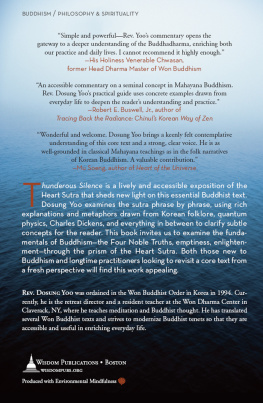
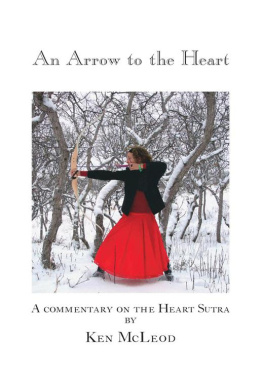
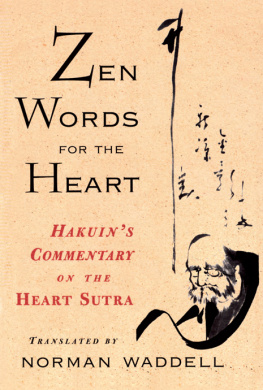
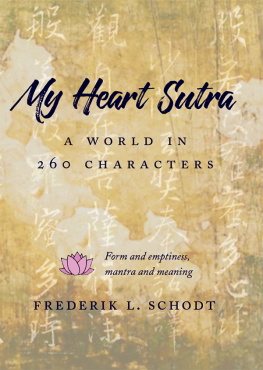

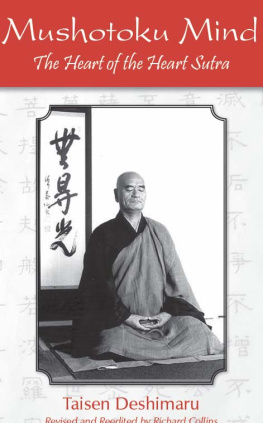
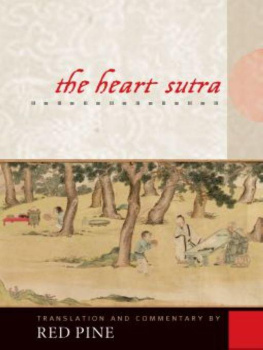
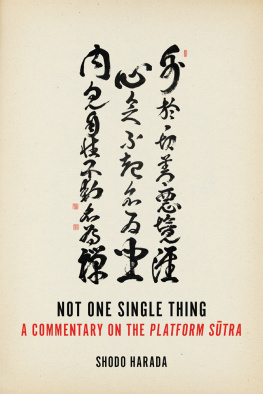
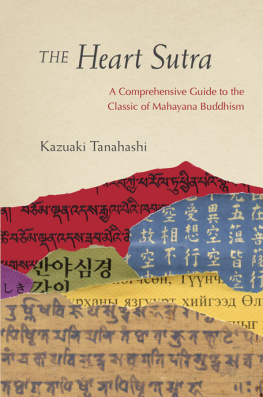


 This book was produced with environmental mindfulness. We have elected to print this title on 30% PCW recycled paper. As a result, we have saved the following resources: 14 trees, 6 million BTUs of energy, 1,152 lbs. of greenhouse gases, 6,248 gallons of water, and 418 lbs. of solid waste. For more information, please visit our website, www.wisdompubs.org. This paper is also FSC certified. For more information, please visit www.fscus.org.
This book was produced with environmental mindfulness. We have elected to print this title on 30% PCW recycled paper. As a result, we have saved the following resources: 14 trees, 6 million BTUs of energy, 1,152 lbs. of greenhouse gases, 6,248 gallons of water, and 418 lbs. of solid waste. For more information, please visit our website, www.wisdompubs.org. This paper is also FSC certified. For more information, please visit www.fscus.org.